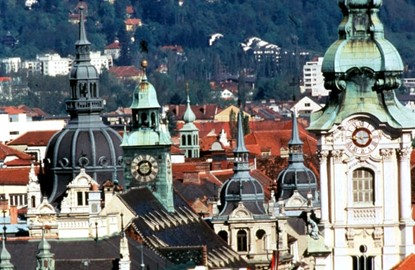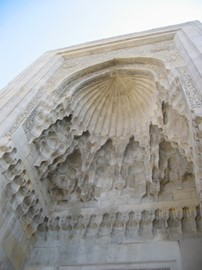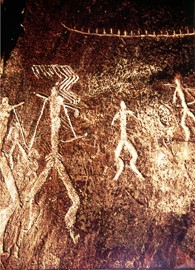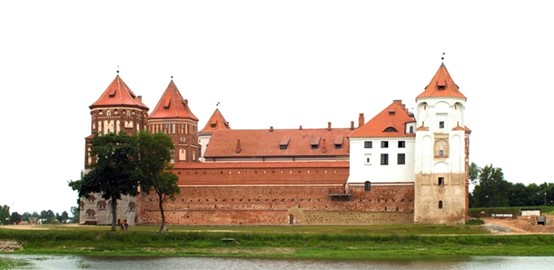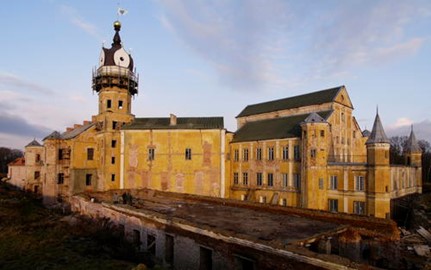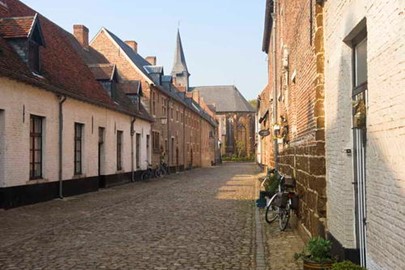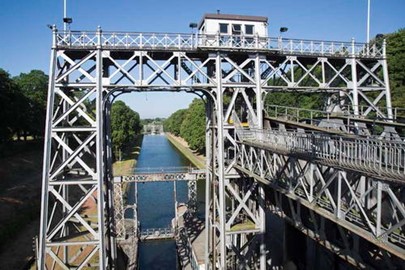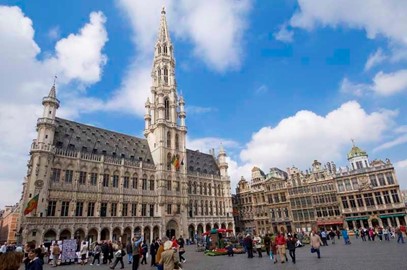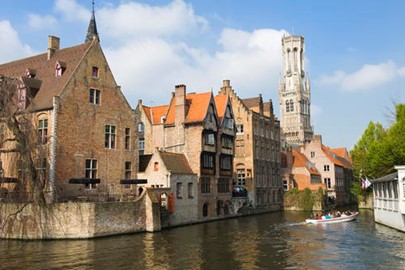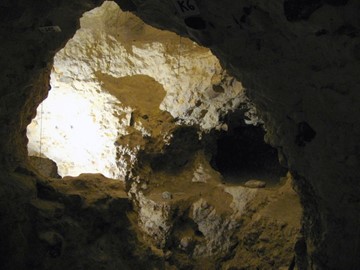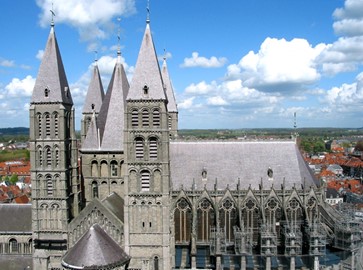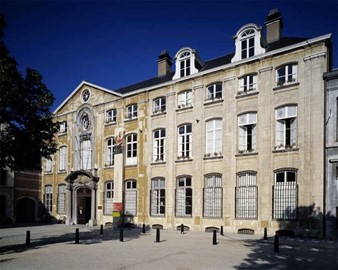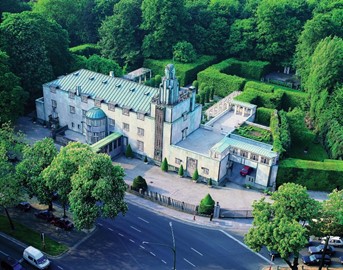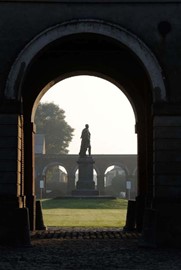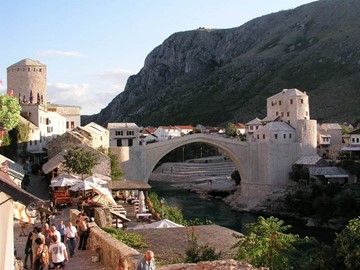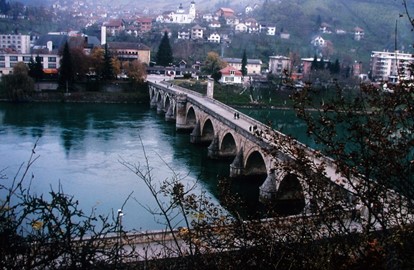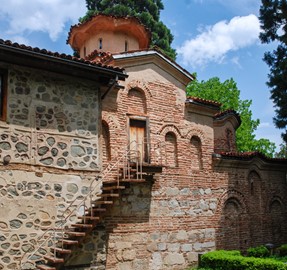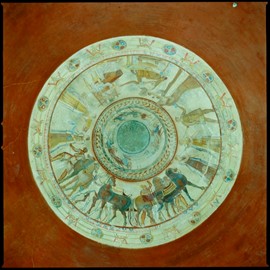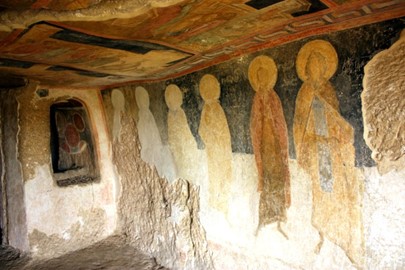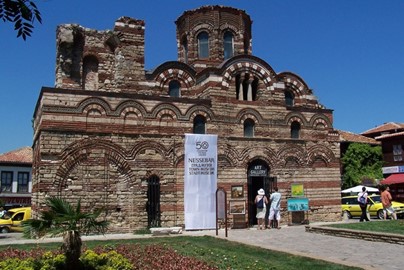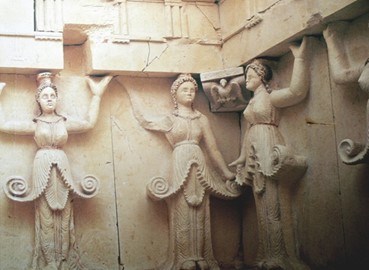region :: europe and north america
Graz
The City of Graz Historic Centre and Schloss Eggenberg, a UNESCO World Heritage site in Austria, is a captivating blend of architectural heritage and cultural history. The well-preserved historic centre features a mix of medieval, Renaissance, and Baroque buildings, with cobblestone streets and a towering clocktower overlooking the city. Nearby, Schloss Eggenberg, a 17th-century palace, showcases ornate interiors and landscaped gardens tied to astronomical symbolism. This harmonious site reflects centuries ... Read More
Baku
Baku, a UNESCO World Heritage site in Azerbaijan, is a historic walled city celebrated for its medieval architecture and cultural richness. Enclosed by ancient stone walls, it features the striking Maiden Tower, a symbol of mystery, and the ornate Shirvanshah’s Palace, a masterpiece of 15th-century design. Blending Persian, Ottoman, and Islamic influences, its narrow streets and ancient structures reflect a vibrant historical tapestry. This well-preserved fortress stands as a testament to Azerbaijan’s archi... Read More
Gobustan Rock Art
Gobustan Rock Art, a UNESCO World Heritage site in Azerbaijan, is a prehistoric treasure renowned for its ancient petroglyphs etched into rugged cliffs. Dating back over 40,000 years, these carvings depict hunting scenes, rituals, and daily life, offering a glimpse into early human culture. Set amidst a stark landscape of boulders and mud volcanoes, the site preserves thousands of engravings alongside archaeological remains. This open-air gallery stands as a vital record of humanity’s artistic and historica... Read More
Mir Castle
Mir Castle, a UNESCO World Heritage site in Belarus, is a striking 16th-century fortress renowned for its architectural grandeur and historical significance. Combining Gothic, Renaissance, and Baroque styles, its robust red-brick walls, towers, and courtyards reflect the power of the noble families who built it. Once a defensive stronghold and aristocratic residence, it stands amid serene landscapes as a symbol of resilience. This well-preserved castle offers a vivid glimpse into Belarus’ medieval past and ... Read More
Nesvizh Radziwill Family Complex
The Architectural, Residential and Cultural Complex of the Radziwill Family at Nesvizh, a UNESCO World Heritage site in Belarus, is a magnificent 16th-century palace and estate celebrated for its architectural splendor and historical importance. Blending Renaissance and Baroque styles, its ornate interiors, fortified walls, and landscaped gardens reflect the wealth and influence of the Radziwill dynasty. The adjacent Corpus Christi Church, a family mausoleum, adds spiritual depth to the site. This grand com... Read More
Flemish Béguinages
The Flemish Béguinages are a UNESCO World Heritage site in Belgium, recognized for their unique historical and cultural significance. These enclosed communities, established in the Middle Ages, were home to the Beguines—lay religious women who lived in semi-monastic conditions without formal vows. The sites feature a blend of architectural styles, including houses, churches, and communal spaces, reflecting their self-sufficient lifestyle. Preserved as peaceful enclaves, they offer a glimpse into medieval so... Read More
The Four Lifts
The Four Lifts, a UNESCO World Heritage site in Belgium, are a remarkable example of 19th-century hydraulic engineering. Built between 1888 and 1917, these four boat lifts were designed to navigate a significant elevation change along a historic canal, using an innovative counterweight system to raise and lower vessels. Recognized by UNESCO in 1998, they remain the only lifts of their kind still in original working condition, offering insight into Belgium’s industrial past. Today, they serve recreational bo... Read More
La Grand Place
La Grand-Place, a UNESCO World Heritage site in Belgium, is a stunning historic square renowned for its architectural grandeur and cultural significance. Surrounded by ornate guildhalls and the impressive Town Hall, it showcases a mix of Gothic, Baroque, and Louis XIV styles, reflecting centuries of prosperity and civic pride. Recognized by UNESCO in 1998, it remains a vibrant public space, hosting events and drawing visitors with its intricate beauty. The square stands as a testament to Belgium’s rich hist... Read More
Brugge
The Historic Centre of Brugge, a UNESCO World Heritage site in Belgium, is a remarkably preserved medieval cityscape celebrated for its cultural and architectural value. Dating back to the Middle Ages, its cobblestone streets, canals, and Gothic buildings—including churches and merchant houses—reflect its past as a thriving trade hub. Inscribed by UNESCO in 2000, it offers a window into Europe’s medieval urban life, with landmarks like the Belfry standing as enduring symbols of its heritage. Today, it remai... Read More
Major Town Houses, Brussels
The Major Town Houses of Victor Horta, a UNESCO World Heritage site in Belgium, are iconic examples of Art Nouveau architecture from the late 19th and early 20th centuries. Designed by architect Victor Horta, these four residences showcase innovative use of iron, glass, and open floor plans, blending functionality with elegant, nature-inspired designs. Recognized by UNESCO in 2000, they mark a pivotal moment in architectural history, influencing modern design worldwide. These houses remain celebrated for th... Read More
Neolithic Flint Mines
The Neolithic Flint Mines at Spiennes, a UNESCO World Heritage site in Belgium, are among the oldest and largest flint extraction sites in Europe, dating back to 4,400–2,200 BCE. These prehistoric mines, featuring deep shafts and galleries, demonstrate early human ingenuity in tool-making and resource extraction. Recognized by UNESCO in 2000, they provide valuable archaeological insight into Neolithic technology and society. The site’s well-preserved underground network highlights its significance as a test... Read More
Notre Dame Cathedral in Tournai
Notre-Dame Cathedral in Tournai, a UNESCO World Heritage site in Belgium, is a striking example of medieval architecture blending Romanesque and Gothic styles. Constructed primarily in the 12th and 13th centuries, it features a grand nave, five towers, and intricate stonework, reflecting its historical role as a religious and cultural landmark. Added to the UNESCO list in 2000, it stands out for its architectural evolution and artistic heritage. The cathedral remains a symbol of Belgium’s rich ecclesiastica... Read More
Plantin Moretus House
The Plantin-Moretus House, a UNESCO World Heritage site in Belgium, is a preserved 16th-century printing workshop and family home, celebrated as the world’s first museum of its kind. Established by Christophe Plantin and continued by the Moretus family, it houses historic printing presses, rare books, and archives, showcasing the dawn of modern publishing. Recognized by UNESCO in 2005, it offers a unique glimpse into Renaissance and Baroque intellectual life. The site remains a treasure of Belgium’s cultura... Read More
Stoclet House
The Plantin-Moretus House, a UNESCO World Heritage site in Belgium, is a preserved 16th-century printing workshop and family home, celebrated as the world’s first museum of its kind. Established by Christophe Plantin and continued by the Moretus family, it houses historic printing presses, rare books, and archives, showcasing the dawn of modern publishing. Recognized by UNESCO in 2005, it offers a unique glimpse into Renaissance and Baroque intellectual life. The site remains a treasure of Belgium’s cultura... Read More
Mining Sites of Wallonia
The Major Mining Sites of Wallonia, a UNESCO World Heritage site in Belgium, are four historic coal mines that highlight the region’s industrial heritage from the 19th and early 20th centuries. These well-preserved sites, featuring pitheads, machinery, and workers’ housing, illustrate the technological and social impact of coal mining during the Industrial Revolution. Inscribed by UNESCO in 2012, they reflect Belgium’s role in Europe’s industrial development. Today, they stand as monuments to the country’s ... Read More
Mostar
Mostar, a UNESCO World Heritage site in Bosnia and Herzegovina, is a historic city famed for its iconic Old Bridge and cultural diversity. Built in the 16th century by the Ottomans, the elegant stone bridge spans the river, linking the city’s blend of Eastern and Western architectural styles. Recognized by UNESCO in 2005, it symbolizes resilience and reconciliation after wartime destruction. Mostar remains a vibrant testament to the country’s multicultural heritage.
Mehmed Paša Sokolović Bridge
The Mehmed Paša Sokolović Bridge, a UNESCO World Heritage site in Bosnia and Herzegovina, is a masterpiece of Ottoman architecture completed in 1577. Designed by the renowned architect Sinan, this elegant stone bridge features 11 arches and spans the river with graceful symmetry, reflecting engineering brilliance. Inscribed by UNESCO in 2007, it stands as a symbol of cultural exchange and historical significance. The bridge remains an enduring icon of the country’s Ottoman legacy.
Boyana Church
Boyana Church, a UNESCO World Heritage site in Bulgaria, is a medieval treasure renowned for its exceptional 13th-century frescoes. This small, unassuming church houses remarkably preserved murals that showcase a pivotal shift toward realism in European art, blending Byzantine influences with local creativity. Recognized for its historical and artistic significance, it offers a rare glimpse into the cultural and religious life of the Middle Ages in the region.
Madara Rider
The Madara Rider, a UNESCO World Heritage site in Bulgaria, is a striking 8th-century rock relief carved into a towering cliff. Depicting a triumphant horseman spearing a lion, accompanied by inscriptions, this monumental artwork symbolizes early Bulgarian statehood and artistic prowess under the First Bulgarian Empire. Celebrated for its historical and cultural value, it stands as a unique testament to medieval artistry and power in the region.
Thracian Tomb of Kazanlak
The Thracian Tomb of Kazanlak, a UNESCO World Heritage site in Bulgaria, is a remarkable 4th-century BCE burial chamber celebrated for its vivid frescoes. Hidden within a beehive-shaped dome, the tomb’s murals depict funeral rituals and mythological scenes with exceptional artistry, offering a rare window into Thracian culture and beliefs. Recognized for its historical and artistic significance, it stands as a masterpiece of ancient Hellenistic influence in the region.
Rock Hewn Churches of Ivanovo
The Rock-Hewn Churches of Ivanovo, a UNESCO World Heritage site in Bulgaria, are a collection of medieval chapels, churches, and monasteries carved into cliffs along a river valley. Dating from the 13th and 14th centuries, these sanctuaries feature well-preserved frescoes that blend Byzantine art with local traditions, reflecting the spiritual devotion of monastic communities. Celebrated for their historical and artistic value, they offer a unique glimpse into Bulgaria’s medieval religious heritage.
Rila Monastery
Rila Monastery, a UNESCO World Heritage site in Bulgaria, is a stunning 10th-century Orthodox complex renowned for its architectural beauty and cultural significance. Nestled in a mountainous landscape, it features vibrant frescoes, intricate woodwork, and a striking blend of medieval and 19th-century styles, reflecting centuries of spiritual and artistic evolution. As a symbol of Bulgarian identity and resilience, it remains a vital center of Orthodox Christianity and heritage.
Nessebar
Nessebar, a UNESCO World Heritage site in Bulgaria, is an ancient coastal town celebrated for its rich history spanning over 3,000 years. Known as the 'Pearl of the Black Sea,' it boasts a remarkable blend of Thracian, Greek, Roman, Byzantine, and medieval Bulgarian architecture, including well-preserved churches adorned with frescoes. Recognized for its cultural and historical significance, it stands as a living testament to the region’s diverse civilizations.
Thracian Tomb of Sveshtari
The Thracian Tomb of Sveshtari, a UNESCO World Heritage site in Bulgaria, is a 3rd-century BCE masterpiece of Thracian architecture and art. This well-preserved burial chamber, featuring a unique decorative frieze of ten caryatid-like female figures, showcases exceptional craftsmanship and offers insight into Thracian funerary practices and beliefs. Celebrated for its historical and cultural value, it reflects the sophistication of an ancient civilization in the region.
Srebarna
Srebarna Nature Reserve, a UNESCO World Heritage site in Bulgaria, is a vital wetland ecosystem centered around a serene lake. Renowned for its rich biodiversity, it serves as a critical habitat for rare and endangered bird species, including the Dalmatian pelican, and supports a thriving array of aquatic life. Recognized for its ecological importance, it stands as a pristine example of natural heritage and a key stopover on migratory routes.
